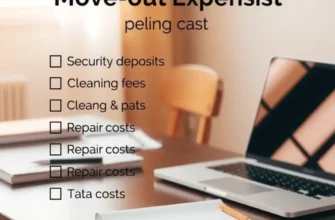Renting your first apartment can feel exhilarating, but sometimes life throws unexpected curveballs. Whether it’s a job change, personal circumstances, or simply the realization that your current place isn’t the right fit, breaking a lease may become necessary. However, it’s crucial to navigate this process legally to avoid potential penalties. Understanding your lease agreement and your rights can empower you to handle this situation with confidence. This guide aims to provide young professionals, students, couples, and families with the clarity and strategies needed to break a lease legally. By following practical steps and understanding your options, you can alleviate financial stress and move toward a more suitable living arrangement. Let’s explore how to effectively break your lease while safeguarding your future.
Understanding Your Lease Agreement

Before making any commitments, it’s crucial to thoroughly review your lease agreement. A lease is not just a mere formality—it’s a legally binding document that outlines the responsibilities and rights of both the tenant and landlord. Understanding each component of your lease can greatly influence your decision-making process, especially if you’re considering early termination.
Lease Duration:
The duration clause specifies the length of time you are obligated to rent the property. Most leases are for 12 months, but some may range from 6 to 24 months. Knowing the time frame empowers you to plan your living arrangements more strategically. If you’re in school or have a job with an end date in mind, make sure this period aligns with those plans.
Early Termination Clause:
Review whether your lease includes an early termination clause. This clause might permit you to break the lease without steep penalties under defined circumstances. Common conditions include job relocation, medical emergencies, or changes in marital status. Having this clause can relieve potential stress if unforeseen life changes require a move. Always ask your landlord to clarify any ambiguous terms in this section.
Notice Period:
Most lease agreements require a written notice of intent to vacate, often set at 30 to 60 days. Failure to adhere to this period can lead to additional fees or forfeiture of your security deposit. Ensure you understand how to properly deliver this notice—whether by email, certified mail, or an official form. Documenting your notice can prevent disputes later.
Penalties:
Clarify any financial repercussions tied to breaking your lease. Penalties can vary widely, from a single month’s rent to covering the cost of renting the unit until a new tenant is found. Be aware that some states have regulations that require landlords to attempt to re-rent the property quickly, which can mitigate costs. Learn more about avoiding rental debt here.
Security Deposits:
Understanding the rules around security deposits can save you from unexpected losses. Your lease should state the conditions under which a deposit will be returned and any deductions that might be applied. Common reasons for deductions include unpaid rent, damage beyond normal wear and tear, or failure to clean the apartment adequately before moving out. Knowing these terms helps ensure you receive your deposit promptly after vacating.
Thoroughly reading your lease agreement and comprehending these key sections enables you to navigate your rental situation with confidence. Careful planning and a clear understanding can prevent complications down the line.
Steps to Break Your Lease Legally

Finding yourself in a situation where you need to break your lease doesn’t have to be overwhelming. Follow these practical steps to handle the process with confidence:
-
Communicate with Your Landlord: As intimidating as it might be, the first step is to engage in a frank discussion with your landlord. Explain your reasons clearly and be honest about your situation. A face-to-face meeting can often work wonders as landlords are generally open to negotiation if it means avoiding a prolonged vacancy.
-
Document Everything: Keeping meticulous records is crucial. Every conversation, email, and letter should be documented. Use certified mail for sending official notices to your landlord to ensure there’s proof of delivery. This documentation can serve as evidence if any disputes arise later.
-
Subleasing: Explore the option of subleasing if it’s permissible under your lease agreement. Subleasing can effectively transfer the immediate financial burden from you to someone else. Make sure to thoroughly vet potential subtenants to prevent any potential issues. Also, notify your landlord and get necessary approvals to avoid lease violations.
-
Negotiate Terms: Your landlord might be amenable to negotiating more favorable terms. For instance, they may agree to a reduced penalty if you can assist in finding a new tenant. Timing your move according to the local rental market demands might also work in your favor, as highlighted in a guide about lease renewals vs. moving, which might offer insights into current market conditions.
-
Seek Legal Advice: If you find yourself overwhelmed or unsure, consulting with a legal professional who specializes in tenant law can be invaluable. A lawyer can provide guidance tailored to your specific circumstances, ensuring you comply with local regulations and protect your rights.
By following these targeted steps, you can strategically navigate the process of breaking your lease, mitigating stress and protecting your financial health. Remember, careful communication and thorough documentation are the cornerstones of a smooth transition.
Final words
Breaking a lease legally can feel daunting, but with thorough preparation and clear communication, it’s entirely manageable. Understanding the terms of your lease and discussing your circumstances openly with your landlord can facilitate a smoother transition. Remember, you have rights as a tenant, and it’s important to exercise those rights while navigating this process. Take the time to evaluate your options and always keep your financial well-being in mind. A well-informed approach can ease the stress of moving on and help you find a living situation that better meets your needs.









